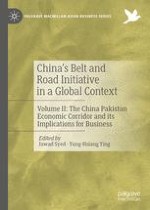Bringing together a collection of interdisciplinary chapters on China’s Belt and Road Initiative (BRI), this book offers a comprehensive overview of the topic from a business and management perspective. With a focus on the China Pakistan Economic Corridor (CPEC), Volume II provides theoretical and empirical analyses of the opportunities and challenges facing businesses. With contributions covering economics, agriculture, energy, value chain, ethics, governance, and security, this collection is a useful tool for academics as well as policy-makers and practitioners in China, Pakistan, and other countries along the new Silk Road.
